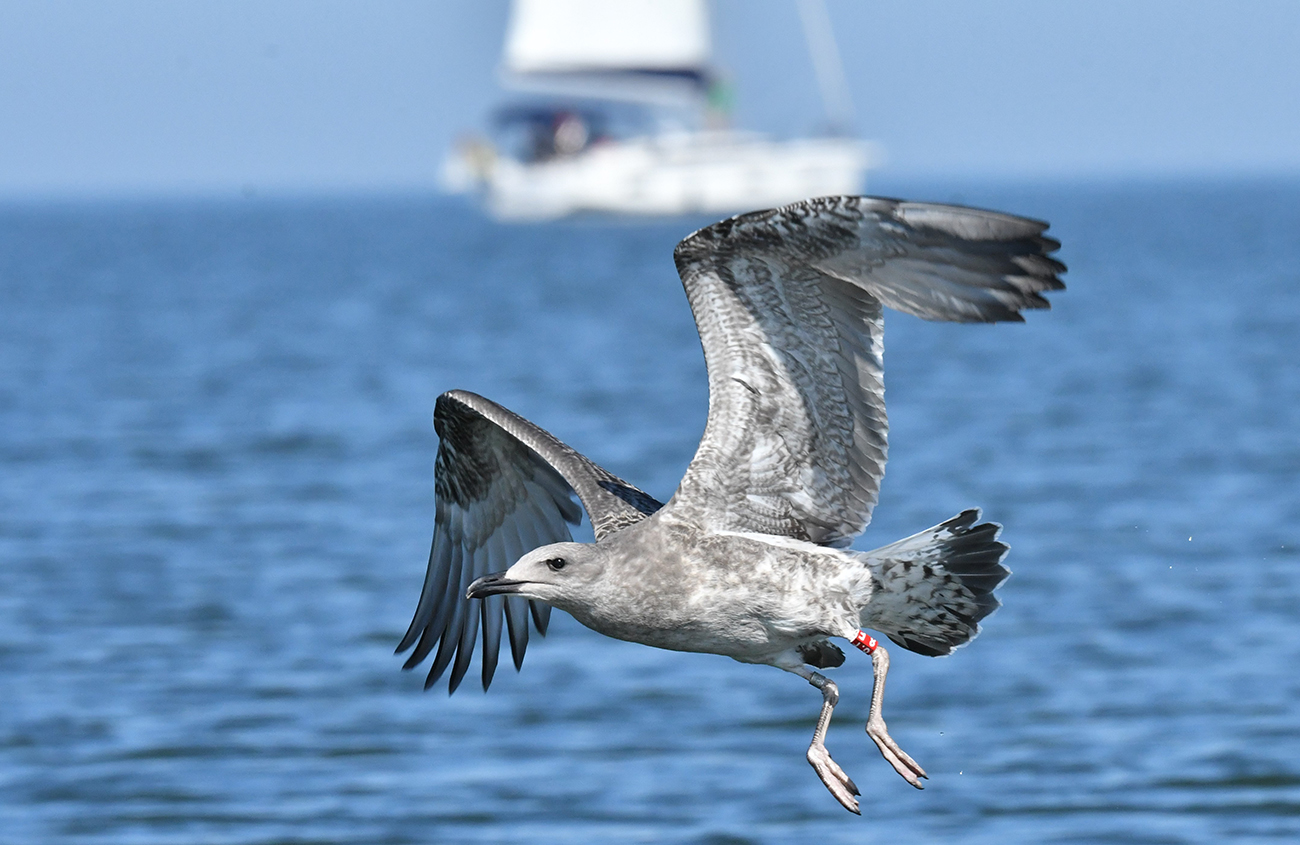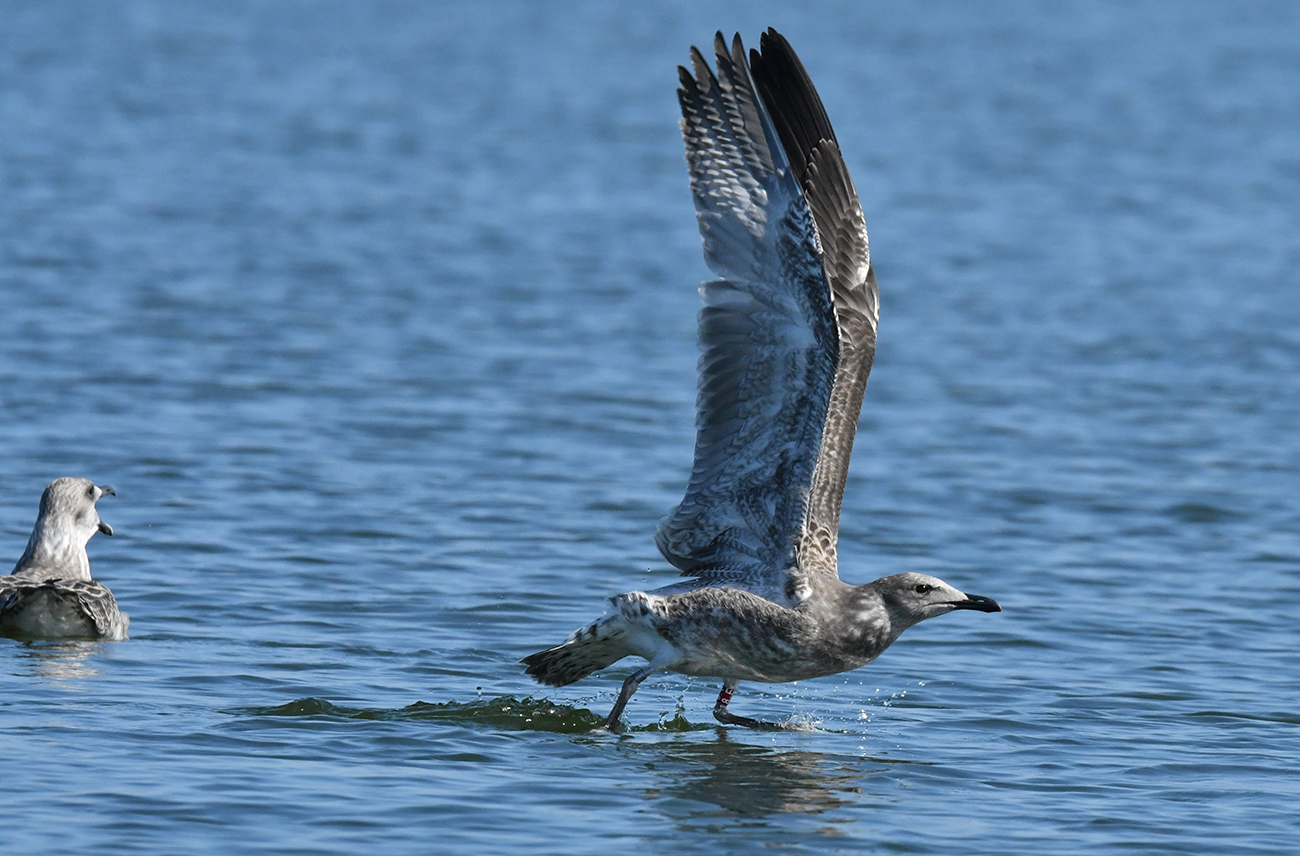 Larus cachinnans in the Netherlands
Larus cachinnans in the Netherlands
(last update: August 16, 2020)
Caspian Gull cachinnans 8.F 1CY, May - September 2023, England & the Netherlands. Picture: Andy hale, Thijs Horst & Mars Muusse.
Tibia ring R-8.F and metal NLA 5.556.488, ringed as pullus Larus cachinnans on May 18 2023 in nest n-F|N at Lelystad, the Netherlands. Ringed by Roland-Jan Buijs ringing team.
Recoveries:
08-09-2023 Cromer (Strand), Norfolk, ENGELAND 5.255,00 N 118,00 E colourring read Andy Hale
| egg sizes & volume 2023 | ||||||||||||
| SPECIES | NEST | A_length | A_width | A_volume | B_length | B_width | B_volume | C_length | C_width | C_volume | TOTAL NEST: | known parents? |
| cach x cach | nFN & r7N | 0 | 0 | 0,00 | 0 | 0 | 0,00 | 0 | 0 | 0,00 | 0,00 | same as 2022 |
| ring pulli: -- | laying A egg: -- | hatch A egg: -- | ||||||||||
| catch: | date: | metal: | darvic: | mass: | wing: | head+bill: | bill: | gonys: | greytone: | |||
| adult | 03-05-2023 | 6.214.906 | R-7.N | -- | 433 | 123,7 | 52,6 | 18,4 | 6 | female cach | ||
| pullus: | 18-05-2023 | 5.556.488 | R-8.F | 256 | -- | 65,4 | -- | -- | -- | |||
| pullus: | 18-05-2023 | 5.556.489 | R-8.J | 224 | -- | 70 | -- | -- | -- | |||
| pullus: | 27-05-2023 | 5.556.488 | R-8.F | 643 | -- | -- | -- | -- | -- | |||
| pullus: | 18-06-2023 | 5.556.489 | r-8.J | 1020 | 341 | 126,8 | -- | -- | -- | with sibling | ||
| n-F|N & r-7.N | |||
| dam: | dam 1 west | ||
| location: | Is nest n-F|N-2022. Nest 2023 is 3 mtr further N now, closer to Herring Gull w-8Z. | ||
| breeders: | cach x cach | ||
| OBSERVATIONS: | |||
| 04-04-2023 | adult: | n-F|N at nest location. | |
| 09-04-2023 | nest: | no eggs, but nest ready. | |
| adult: | Male is n-F|N, female is cach unringed. | ||
| 27-04-2023 | adult: | Male is n-F|N, female is cach unringed. | |
| 03-05-2023 | adult: | Trapped unringed female at nest: r-7N. | |
| 13-05-2023 | adult: | Both parents present. | |
| 18-05-2023 | pulli: | 2 chicks ringed, 3rd one not found. | |
| 27-05-2023 | pulli: | 1x control chick. | |
| 18-06-2023 | pulli: | r-8J & r-8F present. Probably no 3rd chick. Fledged: 2 juveniles. | |
| 25-06-2023 | pulli: | r-8J & r-8F present. Both parents as well. | |
below: Caspian Gull cachinnans 8.F 1CY, September 08 2023 Cromer Norfolk, England. Picture: Andy Hale.
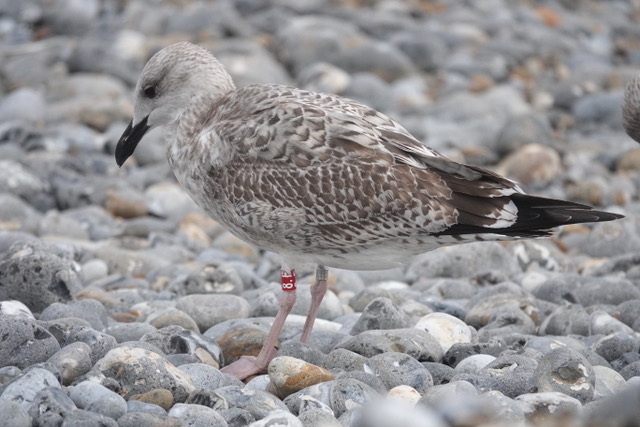

Hi Andy,
Thanks a lot for the picture!
Just a little extra on r-8F (HY=2023), as it is one of those more interesting birds in the colony...
Father of this bird is n-F|N, for details see: http://gull-research.org/cachinnans/lelystad/nbarfn.html
This n-F|N is a local reared bird, pullus from 2019, and started breeding in 2022 in the native Lelystad colony. In 2022 the pair managed to raise 1 chick, which fledged, ringed with r-7B.
See: http://gull-research.org/cachinnans/lelystad/red7B.html
Last April r-7B was reported as 2CY close to the colony, within 25 km's range. We have several images of that bird (for which see the page) and I think we can all agree "there is not much wrong for calling r-7B a Caspian".
Mother of r-8F is a female Caspian, which we managed to trap at the nest this year, when incubating 3 eggs. She now has ring r-7.N. Likely, she was also the partner in the previous year, 2022, as far as we were able to interpret the wingtip pattern and head proportions.
Chick r-8F has a sibling, which also fledged from this nest in 2023, ringed r-8J. Funny as it may seem, this bird has a very michallis-like tail! (okay, not funny).
Back to the plumage of r-8F, which reminded you of michahellis, and I agree with you on that. Maybe this plumage echoes the "likely hybrid" ID of the father, n-F|N. Last year, in 2022, as 4CY bird this male did not tick all the Caspian-boxes really well, when we tried to catch the female on May 09 2022, but accidentally trapped n-F|N instead. As you can see in the images, there are loads of immature markings, only a faint mirror on P10 and none on P9, and loads of dark brown on the innerweb of P10. Again, in 2023, now in 5CY, bird n-F|N has a very wide black medial band on P10 (for Caspian standards that is). We assume one of the parents of n-F|N to be Herring Gull, or maybe some Herring Gull hybrid? Anyway, in your picture of n-8F, some aspects attract attention, like: the distribution of streaking on the head, the wide notched pattern on greater coverts and the very bold anchor shaped pattern on 2nd generation scapulars. Slightly more in line with Herring than it is with Caspian, and of course, it is this accumulation that results in the overall slightly odd appearance, reminiscent of a michahellis as you perfectly concluded.
Cheers mate, hope you'll have some more birds soon. And much appreciated you put so much time and energy in finding the Caspians!
For a bit of fun (or not), we attach an image of sibling r-8J (July 15 2023, Lelystad), look at that tail.
Mars & Roland-Jan
below: Caspian Gull cachinnans 8.F 1CY, July 08 2023, Lelystad colony, the Netherlands. Picture: Thijs Horst & Mars Muusse.
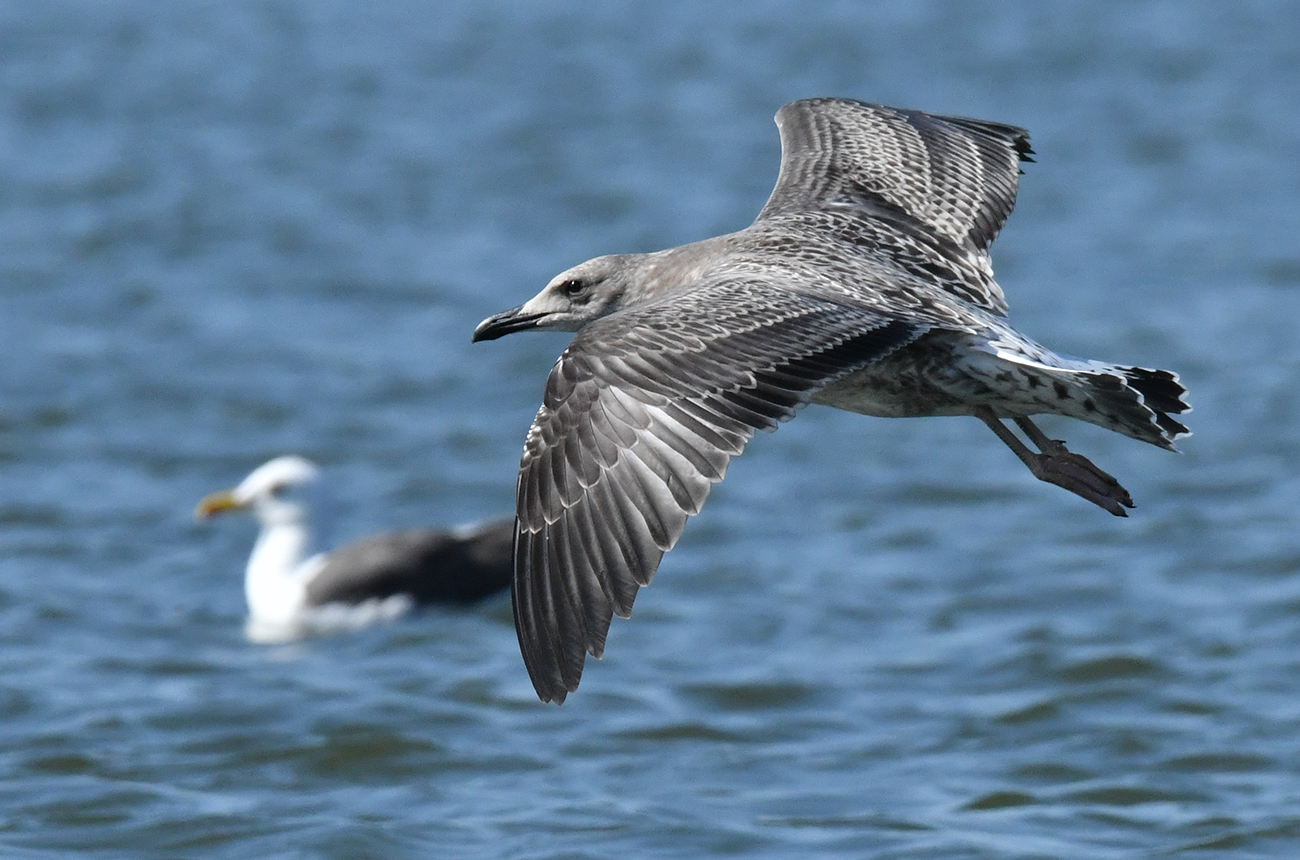
below: Caspian Gull cachinnans 8.F 1CY, May 18 2023, Lelystad colony, the Netherlands. Picture: Thijs Horst.
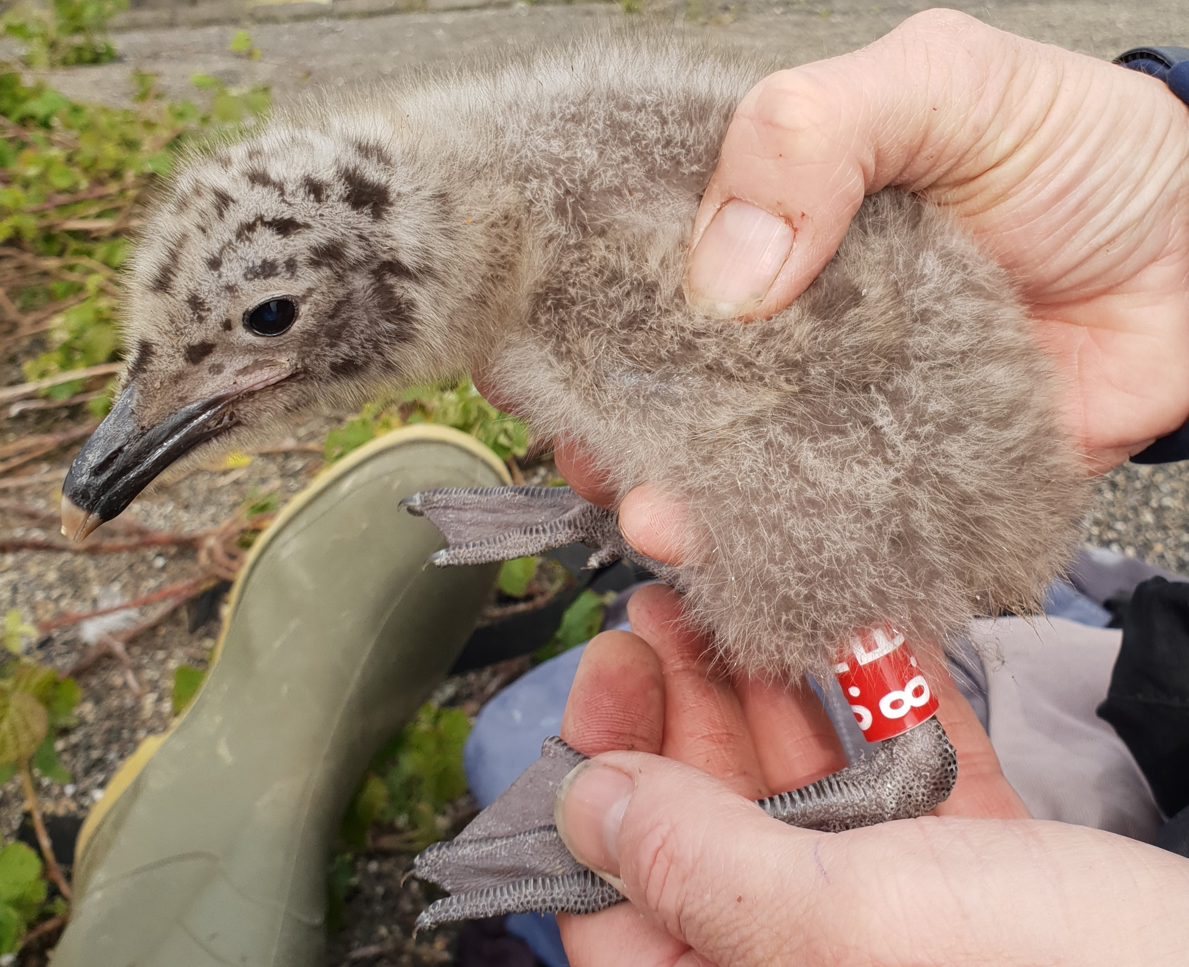

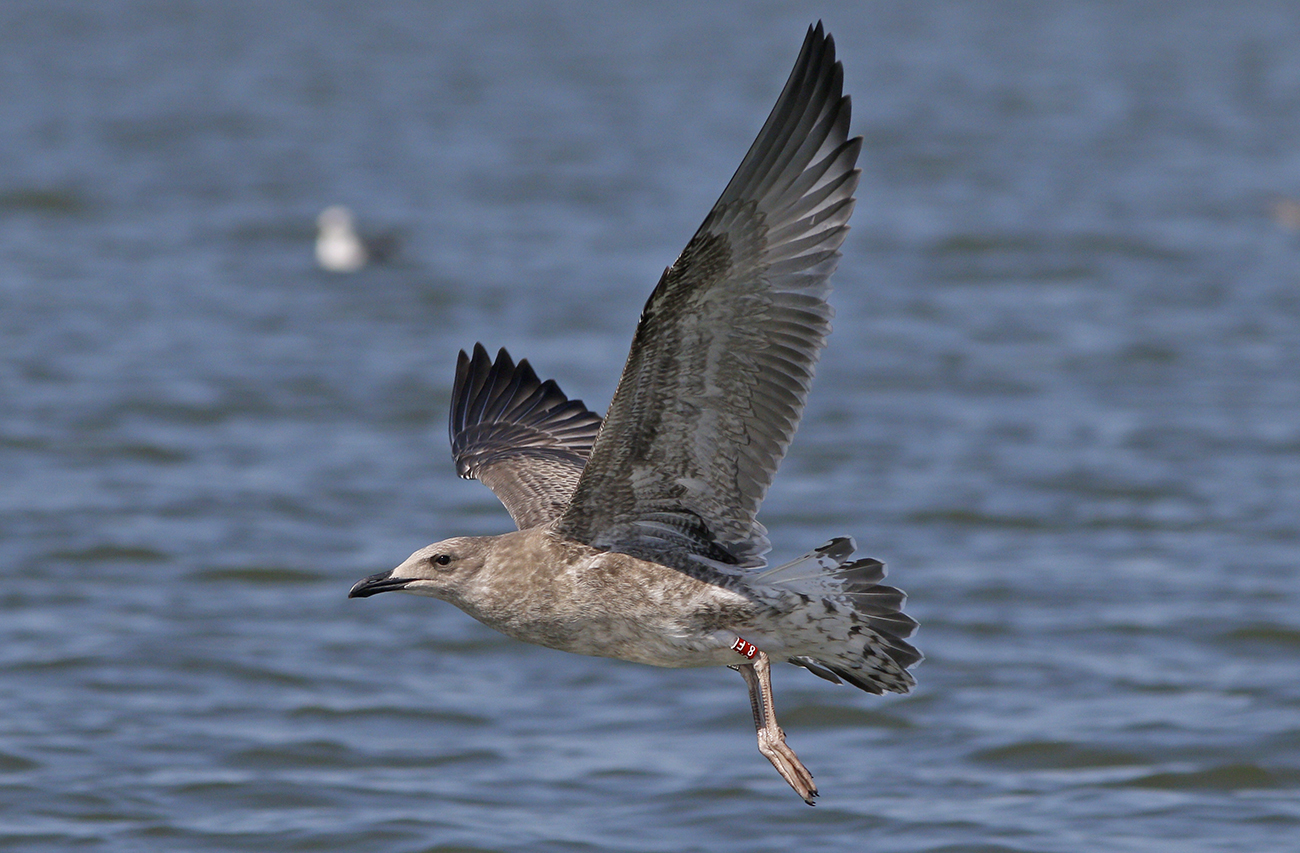

below: Caspian Gull cachinnans 8.F 1CY, June 25 2023, Lelystad colony, the Netherlands. Picture: Thijs Horst & Mars Muusse.
